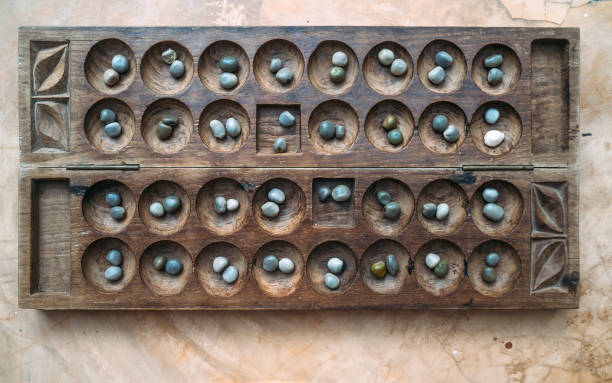Bao

iStock Photo
In the early nineteenth century, renowned Swahili poet Muyaka bin Haji composed a shairi titled ‘Bao Naligwa’. This composition speaks of the skill needed to play Bao, a traditional board game also known as Bao la Kiswahili. It also speaks of the beauty of the wooden board of the game, the person’s attempt to strengthen his defence while playing, and his ultimate victory over his opponent. This is perhaps the earliest recorded history of Bao, which is considered among the oldest board games in the world.
What’s in a Name?
The name Bao is rooted in the Swahili language and means wood, a nod to the material of the board. This game or its variations exists in many Kenyan communities and even across the continent. The Luo know it as Ajua, the Kikuyu as Giuthi, and the Samburu as Ntotoi. Yet across the pond, Bao was a pastime reserved for men. It was usually played under the shade of a tree on a lazy afternoon.
The first item needed to play the game is the board. In the past, the board often had intricate designs carved into it. Other times, players utilised a simple hollowed out wooden piece to create four rows of eight holes. This made 32 holes in total. Bao is a two-player game, therefore, each player gets two rows on the board. In the absence of a board, holes were dug in the ground to create a temporary play station.
The fourth hole on the second row and the fifth hole on the third row are differentiated by either making them square in shape or larger in size. These become the house (nyumba). Each player gets 32 seeds at the beginning of the game; six seeds go inside the house and two in each of the two holes to the player’s right of the house. The rest of the seeds are added to the board gradually as the game progresses.
Sow and Capture
To begin the game, a player picks one of their 22 reserve seeds. They place it in any hole on their front row. The player then takes all the seeds that were inside this hole and begins to ‘sow’ them individually into holes on their rows. A player can choose whether to sow in a clockwise or counter clockwise direction. They retain this direction until the end of their turn and can change in the next turn if they so wish.
If the final seed lands in a hole on the back row that had seeds, the player gets another turn repeating this move. If the seed lands into an empty hole, the player loses the turn, and the opponent gets the chance to begin sowing. But if it lands in an occupied hole in the front row, they capture all the seeds in their opponent’s hole which is directly opposite the last sowed hole and then sow these into their holes. The object of the game is to capture all the seeds in an opponent’s first row. The only hole a player cannot capture from is their opponent’s house.
Complex Simplicity
In simpler versions of Bao, the board only has two rows of six holes and one large house on either side. But no matter how simplified Bao is, one cannot deny how much mind muscle is engaged in trying to learn the rules, let alone attempting to win the game! It is a reminder of the ingenuity of our forefathers. They spent countless hours perfecting the rules of the game and competing for the enviable title “Bingwa wa Bao.”
Let us know, have you tried your hand at Bao before? What is its name in your community? Or are you a champ when it comes to this board game?
#KeGames


